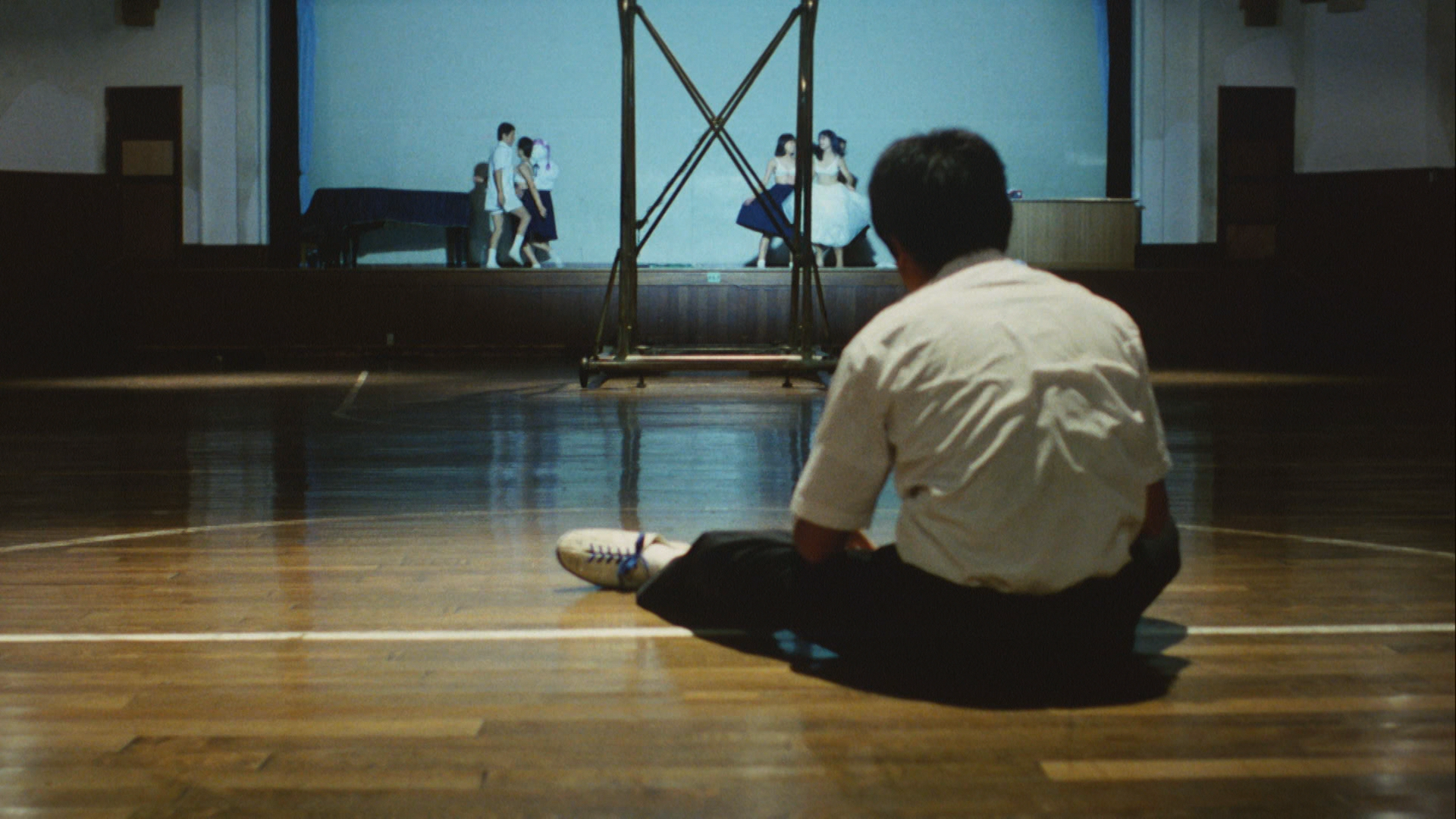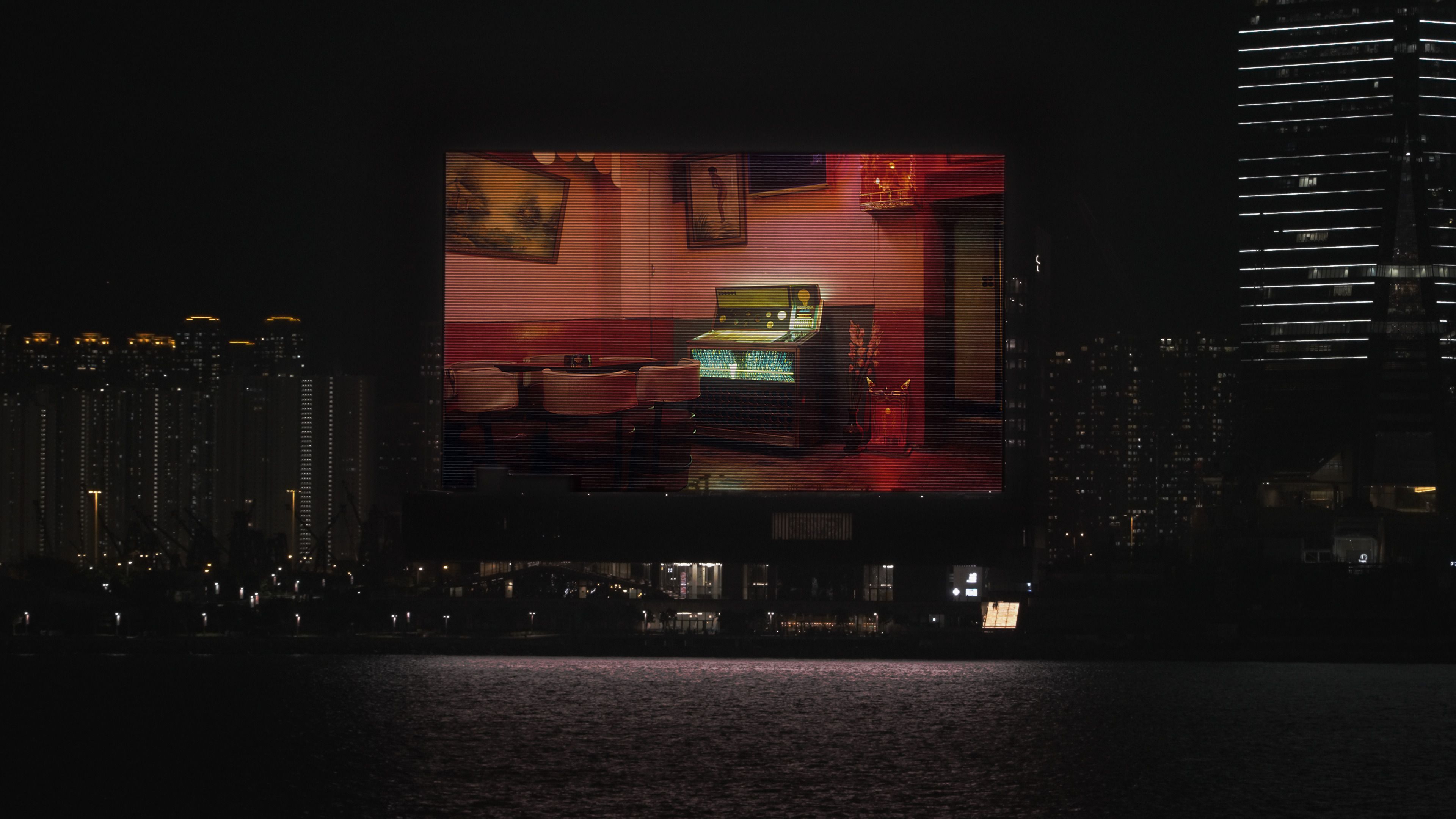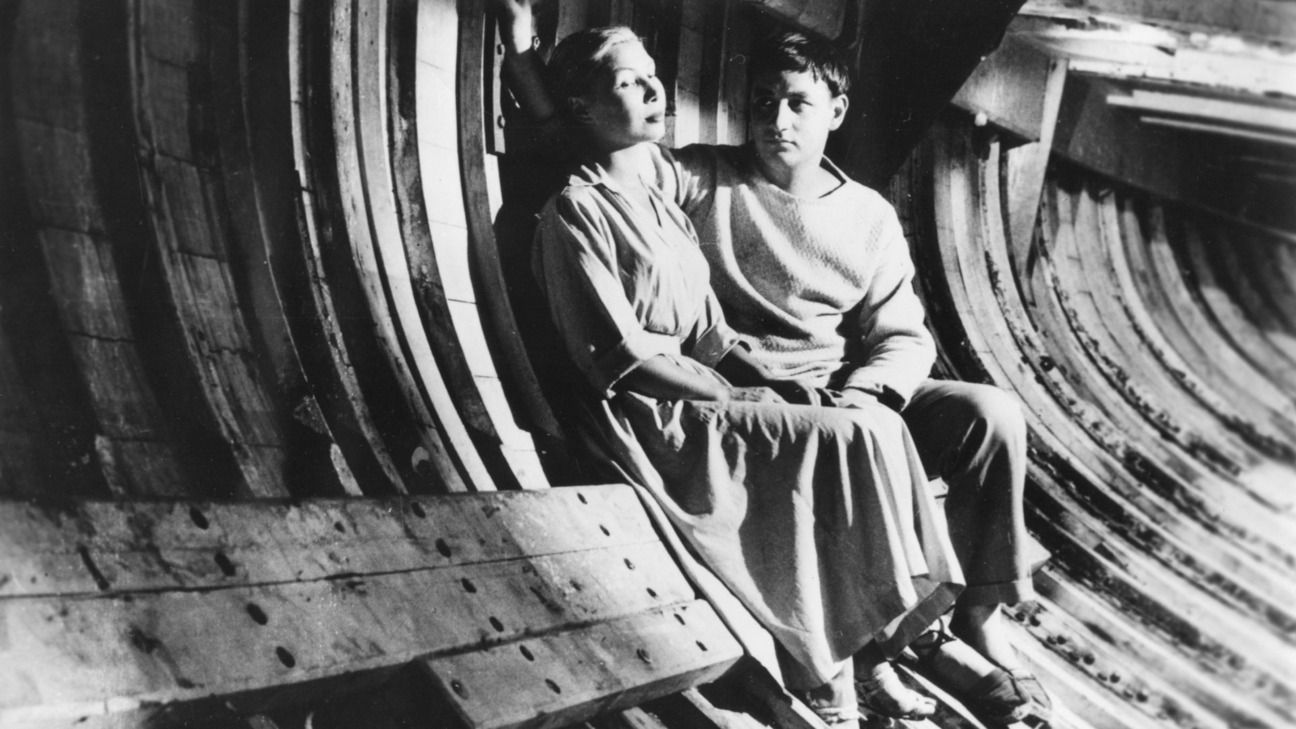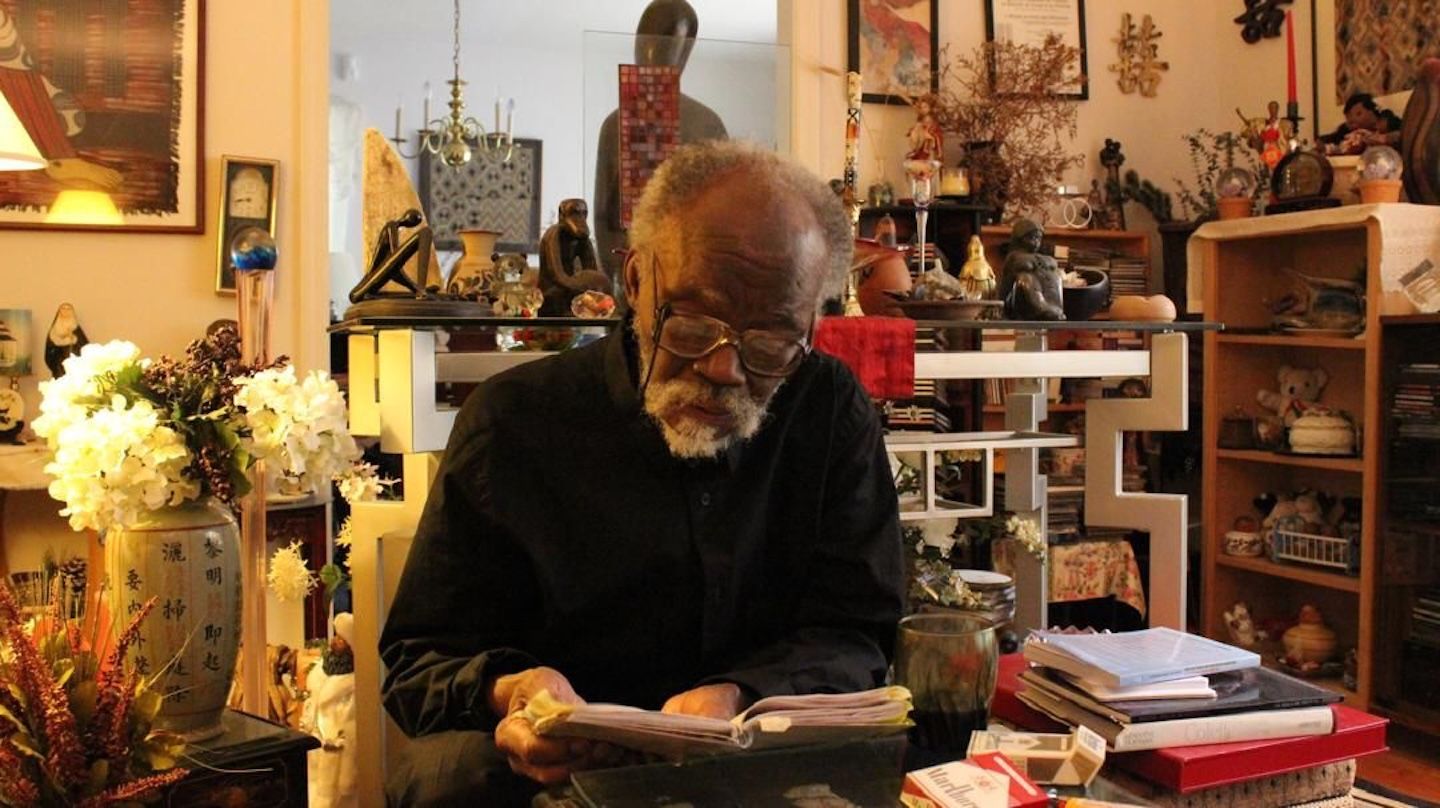Dakar’s Zone B neighborhood hums with the sounds of daaras, traditional Koranic schools that have been the center of Islamic education in West Africa for centuries. Day and night, students of all ages stream in and out of the daaras, and on every corner of the neighborhood they read aloud, they sing, they chant. They train their ears to the muezzin’s calls to prayer, which echo through the city in a seemingly endless cycle of praise. At the edge of this scene is RAW Material Company, a self-described center for “art, knowledge, and society” founded in 2008 by Koyo Kouoh, now the executive director and chief curator of the Zeitz Museum of Contemporary Art Africa, Cape Town. RAW Material Company supports initiatives in curatorial practice, artistic education, residencies, knowledge production, and the archiving of art theory and criticism in order to “work for the growth and appreciation of artistic and intellectual creativity in Africa.” [footnote See →.] Of its establishment, Kouoh writes:
By developing strategies and tactics that go beyond the consensus and existence of established structures, “in-between” zones [are permitted]—spaces in flux that connect theoretical, visual, practical, and local knowledge. They thus represent potentialities and conceptions of the world beyond the bare dynamics of economic globalization. It appears that, despite the inevitable variations of specific cultural settings and sociopolitical parameters, the core urgencies bear the same motives and are unbounded by geographical definitions. [footnote Koyo Kouoh, “Filling The Voids,” in Condition Report: Symposium on Building Art Institutions In Africa (Berlin: Hatje Cantz Verlag, 2012).]
Early in its existence, Kouoh and the team at RAW made education a central element of the center’s programming so that the center could be “a place that provides access to contemporary artistic theory, and in return generates discourse, ideas, and practices with a primary emphasis on Africa and Africa-related matters, all the while including a broader range of origins and intellectual schools.” [footnote Koyo Kouoh, Interview with Marie Hélene Pereira for an upcoming publication of the RAW Académie.] In January 2012 in Dakar, RAW hosted “Condition Report: Symposium on Building Art Institutions in Africa,” an extension of the research RAW conducted on youth organizing at Senegalese universities in early 2011 related to the anti-government protests initiated by Y’en A Marre. [footnote See Chronicle of a Revolt: Photographs of a Season of Protest (Dakar: RAW Material Company, 2012).] The conference, developed with the Goethe-Institut and the German Cultural Foundation, could be understood as the origin of the center’s work in education, with symposia and lectures following in subsequent years. Following RAW’s yearlong sabbatical in 2016, educational initiatives were organized as RAW Académie, an experimental program of conjecture for artistic theory and production.
Born from the exploration of new modes of learning independent from restrictive art-historical designations and vehemently defended by the team at RAW Material Company as a “not-school,” RAW Académie catalyzes critical and theoretical debate around artistic practice on the African continent and beyond. The Académie has sought to position itself as a place of encounter where art serves as a frame for interpreting broader sociopolitical issues. Questioning access to and within education is welcome. At present, Académie sessions occur twice annually—once in spring, once in autumn—alongside the activities of RAW Base, one of the more comprehensive contemporary art libraries in Dakar and Francophone West Africa, and RAW Residency, an international program of exchange and collaboration that invites artists to work from Dakar for extended periods of time.
RAW Académie is a welcome interruption in Dakar’s educational landscape, one still defined by the French colonial project. Established without any willful acknowledgment of the so-called “modern” schools that are the aspiration of the Francophone West African middle class, RAW Académie rejects the notion that it is, or could ever be, a “school” in the traditional sense. The importance of such an assertion cannot be overstated: as a space for alternative pedagogy, the Académie offers an opportunity for discourses on contemporary art to progress from and be dispossessed of the regime of state paternalism in education first instituted in the 1960s by the government of Léopold Senghor. The quality of instruction and facilities in Senegalese universities has visibly deteriorated and the government has yet to cede to the pressure to reform institutions of higher learning. Despite this independence, the Académie is not disconnected from its context but rather foregrounds Senegalese culture and the notion of teranga—a Wolof word loosely translated as “hospitality”—at the center of every engagement. For example, often in discussions, fellows and faculty sit cross-legged on the floor to open up a democratic space for sharing cultural skills, traditions, and knowledges brought from more orthodox educational environments.
Devised as “laboratories of ideas,” the earlier academies created situations of learning that encompassed multiple and diverse pedagogical approaches intended to disrupt restrictive top-down institutional hierarchies that lead to isolation, siloed thinking, and endless red tape. The inaugural session of RAW Académie, “Hunger Incorporated,” directed by Rasha Salti in autumn 2016, engaged critically with the production of excess within neoliberal capitalism by looking at the ways curatorial and artistic practices access material resources. [footnote See →] Session 1 set a strong precedent for what the program could be and, in some ways, established the standard that future sessions would hold themselves to: Practitioners on the African continent and beyond would be permitted to engage with the production of art while examining its place in society outside of market forces. Experimental forms of knowledge would be encouraged over commodified forms. And under these conditions, artistic research would circulate democratically among each session’s ten or so fellows and teaching staff. A critical parameter was also established: by inviting a new director from outside the institution to lead each session, RAW Académie would change with and learn from new influences. (Subsequent sessions were led by Chimurenga, Journal Rappé, Tracey Rose, Otobong Nkanga, and Koyo Kouoh. Yemisi Aribisala and Siddhartha Mitter will lead Session 8, “Tour de Table,” in spring 2020.)
Session 7, entitled “Images pour notre temps” (“Images for our time”) and directed by filmmaker Eric Baudelaire, gathered nine international fellows in discussions of the moving image. Each participant—Noor Yusef Abed (Palestine), Mustafa E. Büyükcoşkun (Turkey), Hera Chan (Hong Kong), Lina Laraki (Morocco), Hira Nabi (Pakistan), Anna Tjé (France/Cameroon), Shirin Sabahi (Iran), Felipe Steinberg (Brazil), and Tako Colette Taal (Wales/The Gambia)—entered the Académie with a distinct approach to working with moving images, from documentary and fiction film to performance, art practice, and curating. Over seven weeks in Dakar, participants and itinerant faculty met every day to interrogate new and old ways of thinking with, learning about, and looking at images as critiques of contemporary modes of representation and tools for foregrounding a discourse of emancipation. The session’s title, “Images pour notre temps,” referred to the 1964–72 documentary series Cinéastes de Notre Temps (reprised in 1989 as Cinéma, de Notre Temps) that profiled a different filmmaker or theme related to cinema each episode. Baudelaire’s direction of the session employed a similar nonhierarchical engagement with film in which filmmakers and their work were at times simultaneously present and presented. Fellows were encouraged to imagine themselves critically embodied in the persona of filmmaker.
Baudelaire arrived to RAW Académie Session 7 highly suspicious of the established methods through which one learns to become a filmmaker or artist. Having never attended film or art school himself, his first formal encounter with art education was as instructor at RAW Académie. This dynamic, beginning in front of the group rather than in it, compelled Baudelaire to propose questions related to creative authority and influence. How might a thorough knowledge of the canon hinder aspiring filmmakers? Not knowing, after all, can entail a lack of inhibition; responding to subjects and themes impulsively can be a filmmaking strategy in itself. Keenly aware of how even the best educators can depress their students’ original thought and practice by subjecting them to a crushing amount of knowledge about the great artists and filmmakers who came before them, Baudelaire firmly defined what he does not think an education in arts and cinema should look like: “It should not stifle your ability to invent your own language or your ability to create your own images, to find a way to organize them, and to put them out into the world.”
Baudelaire took particular interest in actualizing the Académie as an organic response to the context of Dakar, to the places and the people encountered. The invitation to direct Session 7 in Dakar established an imperative to confront the dislocation of an unfamiliar environment in real time. The circumstances of the city—one recovering from drought and the intense political climate of elections earlier in the year—were deployed to create a specific context that countered the feeling of formal education. The public was invited into the space of the Académie via public talks and screenings, thereby building its own community through the shared experience of watching films together. Every academy is meant to crowdsource possibilities for learning together and shifting paradigms, and communal events like the public talks and screenings disrupted class- and education-based distinctions. Discussions within the institutional framework of RAW Material Company, however, occasionally reinforced the semi-autonomous sphere that every session generates for itself.
The two-month duration of each session, Baudelaire said, “is exactly long enough to find a language in common, but it is not enough time for the academy to dilute itself into lengthy bureaucratic processes when questions of sustainability arise.” The program was allowed to grow in focus and intensity and delve into the heart of some important questions without becoming routine. Concerns over professionalization were done away with. As a filmmaker invested in temporary forms, Baudelaire directed the session with the belief that as soon as one creates conventions around process, the defects of institutions are replicated. RAW Académie’s design echoes this belief: from the start, each session is unconcerned with perpetuating itself and so the emergence of a conservative institutional inertia is prevented. Participants—fellows and teaching staff alike—are free to explore rather than consolidate their positions within the academy.
During Session 7, less attention was given to the actual production of films than their analysis, and Baudelaire experimented with different methods for creating a democratic learning environment by emphasizing interactive discussion and problem-solving, namely peer critique and one-on-one meetings. Activities ran the gamut from public talks to blind screenings (in the spirit of the Flaherty Seminars) to walks through the city of Dakar, with many events held in the city’s historic open-air Cinéma Empire in Médina, a neighborhood famed for being the center of creative discourse in Senegal. In the introduction to the academy, Baudelaire described these exercises as “rituals and repetition.” Ultimately, the accumulation of situations and experiences would determine the session’s success, with the hope that time spent together talking, working, and watching films would germinate new ideas after the session’s end.
Alongside actors and activists from Dakar, Session 7 featured interventions and contributions by diverse visiting faculty from around the world: Joana Hadjithomas and Khalil Joreige, Rasha Salti, Alain Gomis, Nicole Brenez, John Akomfrah, Alfredo Jaar, Naeem Mohaiemen, and Mati Diop. French-Senegalese filmmaker Diop joined the session as the final faculty member on the eve of her film Atlantics being shortlisted for the Academy Award for Best International Film, an event that opened up a discussion about the place of independent film in relation to Hollywood and contemporary pop culture.
To begin the session, Baudelaire led fellows through a text of his own, “Accommodate the Mess,” written for the fortieth anniversary anthology of the Cinéma du Réel at the Centre Pompidou, Paris. In it, he proposes approaches to negotiating the overlaps of fiction and reality in cinema, offering a strategy for making films:
I have never encountered a useful definition of what the real is, but I have always had a great love for those who have devoted themselves to attempting to grasp it, study its mechanisms, or simply shine a light on a sliver of it, so we may reflect upon it, with variable doses of fiction, invention, imagination and observation. [footnote Eric Baudelaire, “Accommodate the Mess,” in What Is Real: Filmmakers Weigh In, ed. Andréa Picard (Paris: Post-Éditions, 2018).]
Introducing his films The Anabasis of May and Fusako Shigenobu, Masao Adachi, and 27 Years without Images and Also Known As Jihadi, Baudelaire pointed to the fact that much of his work has revolved around subjects—people—who had difficulty situating themselves inside the prescriptions of the “real” in the contemporary world. “Revolutionaries, terrorists, secessionists, jihadists … words that aren’t very helpful in understanding who these people really are. What they have in common is that they have rejected the real, and tried to reshape it, often in tragically flawed ways.”
Nicole Brenez, professor of cinema studies at University of Paris 3–Sorbonne-Nouvelle and curator at Cinémathèque Française, continued the theme of depicting reality in her presentation during the session’s third week. She proposed three questions for considering why one should make films:
- With whom and for whom (to make a documentary)? The deontological situation.
- Why and for what purpose? The historical situation.
- With which image? The aesthetic material.
This led into discussions about the possibility that films sometimes lack awareness of the filmmaker’s gaze and that what matters categorically is what the film does, not what it intends to do. The presentation challenged fellows to develop a method of filmmaking that could undo identity and subjecthood. Is it possible to reverse engineer a good intention? Is it only possible to recognize the things with which we can identify, the places where we see ourselves represented? Can we build an identity without always being in opposition to the “other”? By performing a sensitive reading of a landscape, filmmakers could avoid superimposing their respective intentions on it.
French-Senegalese writer and director Alain Gomis initiated a dialogue between Dakar and the fellows soon after Brenez’s presentation, partnering fellows with filmmakers from the Centre Yennenga, a production-focused platform for filmmakers in the Grand Dakar neighborhood established in early 2019 by Gomis and Aissatou Diop. Fellows were commissioned to make films over the course of three days, having never worked together before and in some cases without a visual or spoken language in common. The purpose of the exercise was to challenge the fellows to work inside the limitations imposed by an unfamiliar context and to think and look through the conditions of laboring as a filmmaker in Dakar, a city with potentially fewer resources for independent filmmaking than the places they arrived from. This three-day engagement resulted in a series of short films: variations on explorations of Grand Dakar in which the fellows navigated the area and made spontaneous negotiations with the subjects they chose to engage.
In the post-screening discussion of his film Tey (Aujourd’hui), Gomis recalled his thoughts about to working in Dakar upon the film’s 2013 release: “If you’re trying to find the right image of [Dakar], you can have a thousand images and still not have the perfect picture of [Dakar]. The real [Dakar] exists in the gaps between all those pictures. Truth is found in all those things that escape us. Truth is in the in-betweens.” [footnote See →.]
Working in the city, he added, was very much about how well one learns to speak to people and build community. Gomis proposed different ways of engaging with people but noted that Dakar and Senegal are places where the heritage of cinema exists as an extension of how people think of and see themselves. The identities constructed in Senegalese cinema, while often reflective of one public persona or another, have also operated as generators of identity in themselves, such as in Djibril Diop Mambéty’s Touki Bouki or Ousmane Sembène’s Xala. By offering the fellows an opportunity to play, the exercise with Gomis gave them space to imagine, to reckon with reality, and to determine what happens when imagination and reality overlap. Gomis’s parting invocation was to “find your way, find your cinema,” a reinforcement of Baudelaire’s principle that education should not inhibit one’s capacity for invention.
Seminars by other teaching staff linked image, meaning, and representation. Curator Rasha Salti and filmmaker Khalil Joreige spoke about experimentation across forms and the process of creating a framework of understanding through the conscious production of meaning. Joreige emphasized that militant cinema extends revolutionary ethics by reappropriating symbols and history and that the form of cinema allows for the construction of an ideology. Filmmaker John Akomfrah considered the narrative device of the quotation as idea and ideal, noting that when a film introduces an external source, it relies on the audience’s preexisting knowledge to provide meaning and thereby invokes a standard vocabulary of film. Chilean-born artist, architect, and filmmaker Alfredo Jaar introduced his film work in Rwanda as a careful balance between information and poetry and asked the fellows to reflect on whom the burden of belief rests and for whom we allow ourselves to have compassion when dealing with images of violence.
RAW Material Company proposes the Académie as a place where a new canon might develop. As a space that invites the possibility to displace colonial learning structures, each session offers time to examine the relationships between power and representation, to globalize and decenter the narratives, histories, and conditions of diverse locales. By mobilizing makers and thinkers, and insisting that they gather in Dakar, a city working well to diverge from its own colonial history, RAW Académie plays a vital role in creating new potential meanings for artists and cultural practitioners working on the edges of Western modernity. Though RAW Material Company actively seeks to divest itself of what might be called a “peripheral position,” the urgency of creating educational formats like the Académie cannot be taken for granted. The control and limitation of how geographies outside of Europe and the Anglophone world can contribute to cultural history must be examined in ways that highlight the construction of hierarchies, whether between filmmaker and subject or periphery and center. Session 7 led fellows and faculty through an exploration of the stakes of producing and circulating images, and how they, as filmmakers, might better interrogate the meanings embedded in the images they produce.
—Renée Akitelek Mboya
See →.
Koyo Kouoh, “Filling The Voids,” in Condition Report: Symposium on Building Art Institutions In Africa (Berlin: Hatje Cantz Verlag, 2012).
Koyo Kouoh, Interview with Marie Hélene Pereira for an upcoming publication of the RAW Académie.
See Chronicle of a Revolt: Photographs of a Season of Protest (Dakar: RAW Material Company, 2012).
See →
Eric Baudelaire, “Accommodate the Mess,” in What Is Real: Filmmakers Weigh In, ed. Andréa Picard (Paris: Post-Éditions, 2018).
See →.






















